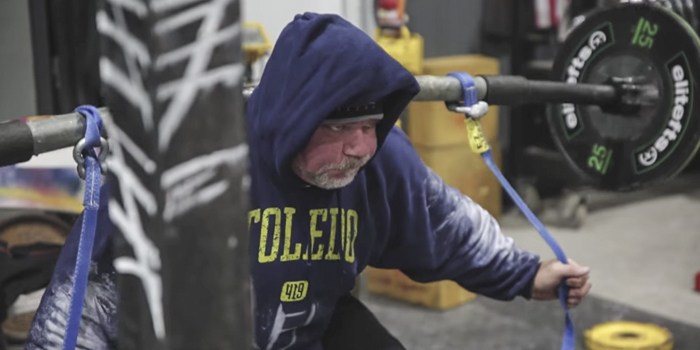
Editor's Note: Fixing Dave Tate is an educational video series intended for demonstration purposes only (acts as a case study specific to Dave Tate). It is not intended to medically diagnose, treat, or manage symptoms. If you are in pain, please consult a licensed healthcare professional.
Through an initial assessment conversation, movement screening, and an orthopedic evaluation, Dr. John Rusin has identified three key areas of focus for improving Dave's movement capabilities and experience of daily pain. Now in this video, Dr. Rusin observes Dave actually train in his current state. This is an extremely important step because, as good as it is to talk about stabilization and mobilization, it's all meaningless until you step into the gym and see how the body performs under load. For this step, Dr. Rusin explains that the purpose is to not coach Dave, but instead see how Dave currently trains on his own.
Spider Bar Box Squat
To begin, Dr. Rusin watches Dave perform a box squat using the spider bar to a high box. With a compound movement such as this, a lot of things are happening, so Dr. Rusin observes one joint at a time from the bottom up, beginning with foot, to the ankle, through the knees, hip, pelvis, torso, spinal positioning, and shoulder positioning. He also observes from multiple angles, including the back oblique angle, the front oblique angle, directly from the side, directly from the front, and directly from the back. Dr. Rusin remarks on the great importance of having significant load and velocity in this movement to reveal compensation patterns. As Dave works up in weight and gets closer and closer to failure on the lift, Dr. Rusin observes Dave's right hip shake and demonstrate some instability, which also impacts the knee angle and degree of rotation at the hip.
Tsunami Bar Squat
For the second movement, Dr. Rusin has Dave move to a more authentic squat movement with a narrower stance. A tool Dave has been using in the free squat recently is the Tsunami Bar with straps looped around the bar to enable him to hold it. From the very first set, Dr. Rusin sees several positive things. Dave's spinal position in the deeper squat position stays very well put together, as well as a strong ground contact at the feet. Additionally, in this movement Dave demonstrates a lot of mobility at the hips. Moving through a variety of stances, Dave and Dr. Rusin discuss the benefits of each foot position and talk about the takeaways regarding position and stability from this exercise.
Kettlebell Hip Hinge
For the third test, Dr. Rusin has Dave perform a hip hinge movement while holding a kettlebell, similar to a Romanian deadlift or a stiff-legged deadlift. Here Dr. Rusin observes that the depth and neutral spine position of Dave's free squat in the previous movement should translate to his hip hinge movements such as this. Through various adjustments to the execution of the movement, Dr. Rusin explains the importance of reprogramming how Dave performs a hip hinge.
Kettlebell Squat
Very similar to the kettlebell hip hinge, this movement is used to observe Dave's hip and spinal positions. Because Dave's shoulder limitations do not allow him to hold a kettlebell in a goblet squat position, he holds the kettlebell between his legs. Dr. Rusin begins by having Dave use as close a stance as possible while maintaining hip centration and using a smooth, slow, coordinated motion. Dr. Rusin observes quality movement and explains that Dave is in a good place with this exercise, indicating it will likely be used in the future to aid other movement patterns.
Split Squat
Dr. Rusin cues Dave to perform this movement with a forward torso angle to bias the posterior chain musculature. He also has Dave set up in a position that allows him to find proper tension in his body prior to initiating the concentric motion, then using a very controlled eccentric motion. While Dave easily moves concentrically, he struggles to maintain control eccentrically.
Reverse Lunge
Very little about the setup for this movement changes from the split squat. The only difference is that Dave comes out of contact with the ground and then back into contact with the ground. Similar to the previous movement, Dave struggles controlling the eccentric portion of the movement and demonstrates compensation but overall, Dr. Rusin is generally pleased with the quality of the movement. Additionally, by placing two fingers on a medicine ball rack, Dave performs the movement much more easily, which Dr. Rusin explains is indicative of a stability and motor control issue.
To close the video, Dr. Rusin gives a general summary of his findings from the training session and explains how he expects to utilize them in the future. Specifically, he talks about using a warm-up that includes phases of soft tissue, positional activation, and muscular activation work to directly attack Dave's issues.
By the minute:
- (0:52) The purpose of this session
- (2:10) Spider Bar box squat
- (8:04) Tsunami Bar free squat
FIXING DAVE TATE SERIES
- Initial Assessment with Dr. John Rusin
- Movement Screening
- Orthopedic Evaluation
- The Three Areas of Focus Discovered During Initial Evaluation
- Observing Dave's Current Training Capabilities
- Programming the Six-Phase Dynamic Warm-up Sequence
- The Dynamic Warm-Up Sequences for Upper Body and Lower Body









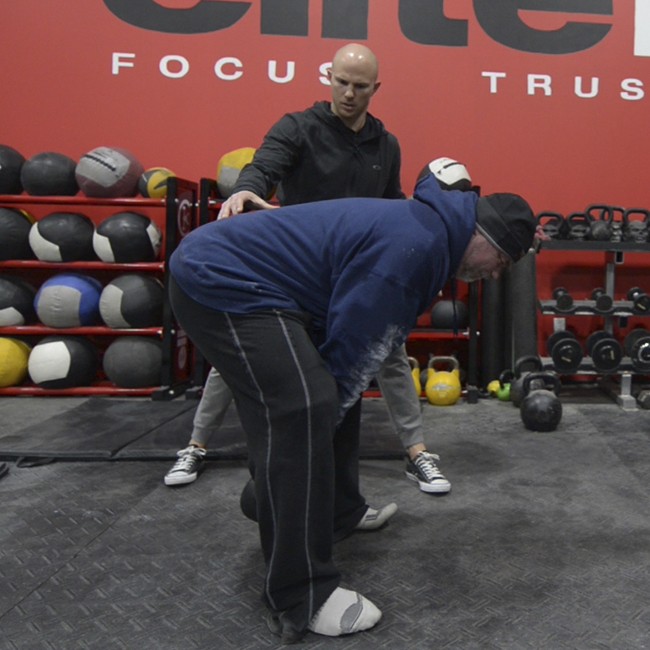
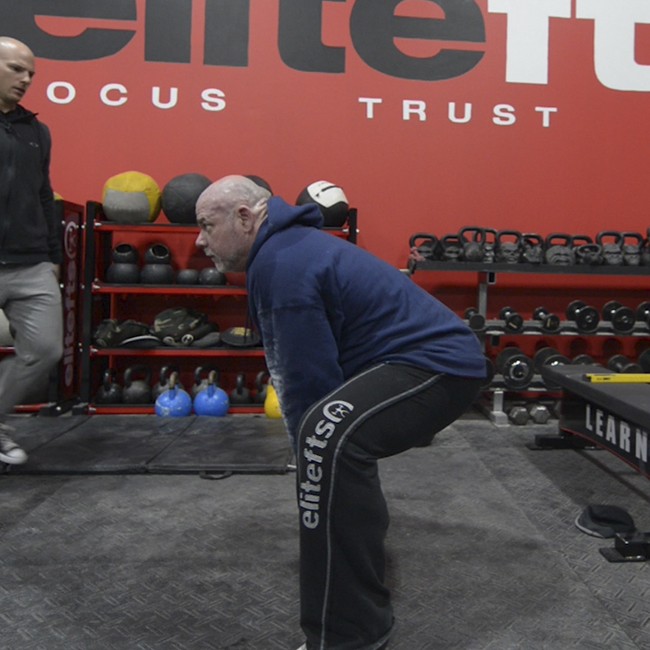
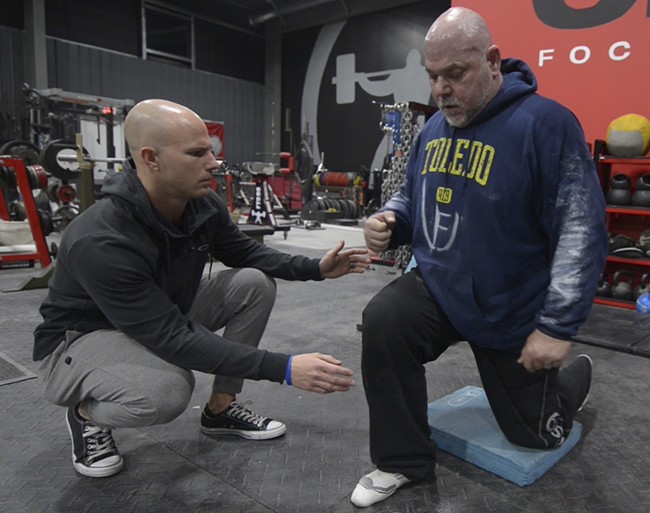
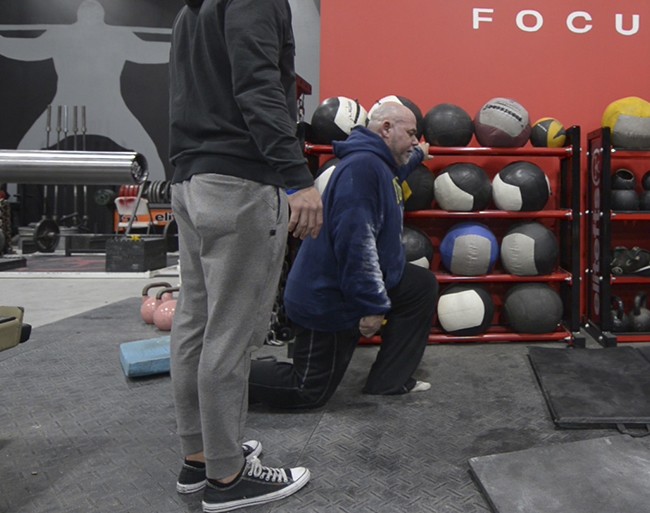

1 Comment